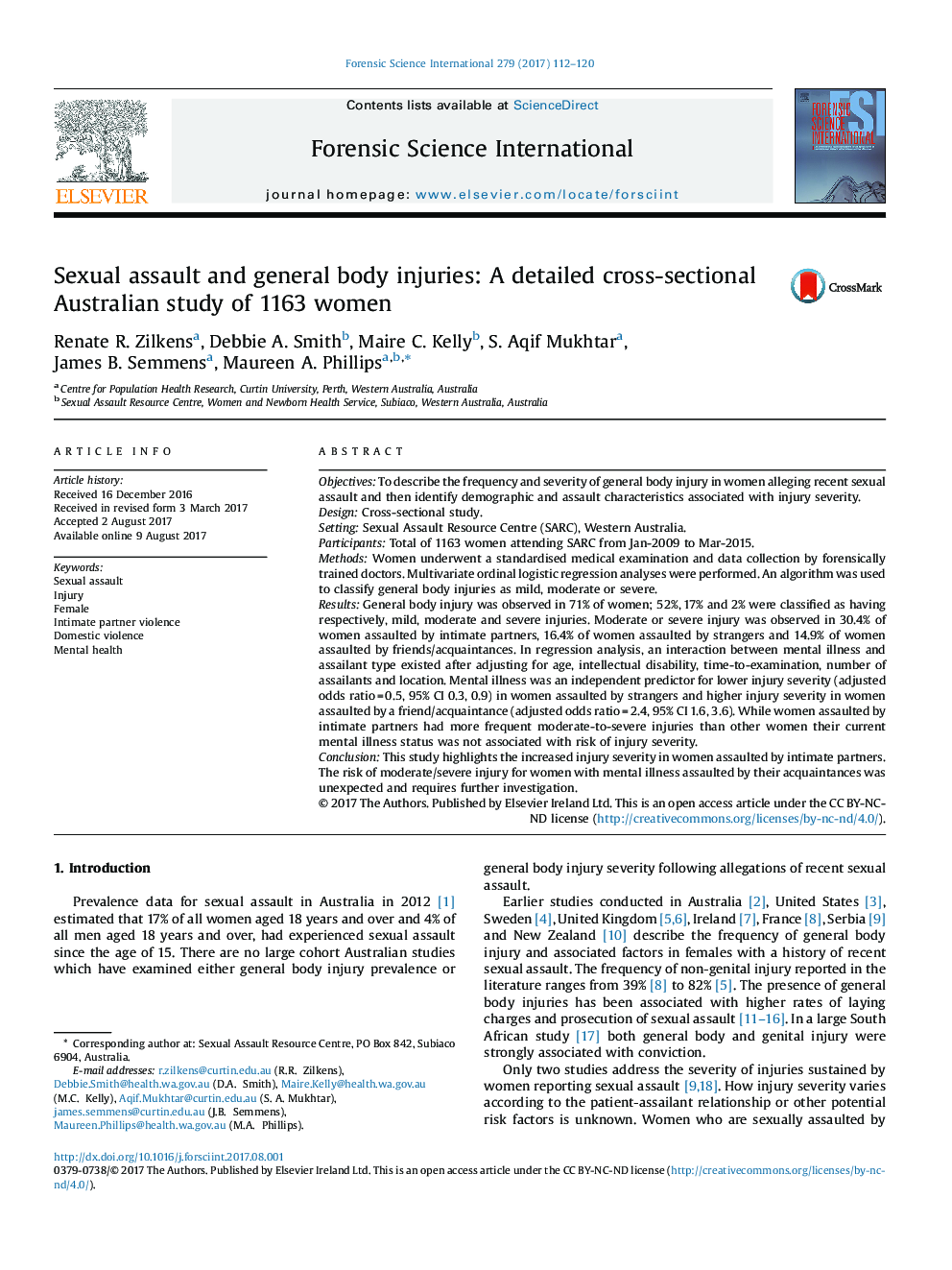| Article ID | Journal | Published Year | Pages | File Type |
|---|---|---|---|---|
| 6462100 | Forensic Science International | 2017 | 9 Pages |
â¢Detailed analysis shows the associations of body injury in female sexual assault.â¢1 in 5 women have moderate or severe injury after sexual assault.â¢Intimate partner sexual assaults have the greatest risk of any body injury.â¢Intimate partner sexual assaults also have the most risk of more severe body injury.â¢Associations between body injury & assailant type varied by mental health status.
ObjectivesTo describe the frequency and severity of general body injury in women alleging recent sexual assault and then identify demographic and assault characteristics associated with injury severity.DesignCross-sectional study.SettingSexual Assault Resource Centre (SARC), Western Australia.ParticipantsTotal of 1163 women attending SARC from Jan-2009 to Mar-2015.MethodsWomen underwent a standardised medical examination and data collection by forensically trained doctors. Multivariate ordinal logistic regression analyses were performed. An algorithm was used to classify general body injuries as mild, moderate or severe.ResultsGeneral body injury was observed in 71% of women; 52%, 17% and 2% were classified as having respectively, mild, moderate and severe injuries. Moderate or severe injury was observed in 30.4% of women assaulted by intimate partners, 16.4% of women assaulted by strangers and 14.9% of women assaulted by friends/acquaintances. In regression analysis, an interaction between mental illness and assailant type existed after adjusting for age, intellectual disability, time-to-examination, number of assailants and location. Mental illness was an independent predictor for lower injury severity (adjusted odds ratio = 0.5, 95% CI 0.3, 0.9) in women assaulted by strangers and higher injury severity in women assaulted by a friend/acquaintance (adjusted odds ratio = 2.4, 95% CI 1.6, 3.6). While women assaulted by intimate partners had more frequent moderate-to-severe injuries than other women their current mental illness status was not associated with risk of injury severity.ConclusionThis study highlights the increased injury severity in women assaulted by intimate partners. The risk of moderate/severe injury for women with mental illness assaulted by their acquaintances was unexpected and requires further investigation.
